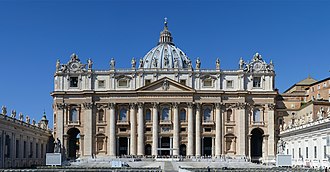As the Roman Empire transitioned from paganism to Christianity in the 4th century CE, its architecture underwent a transformation as well. The shift wasn’t just in decoration or symbolism—it was a complete change in how buildings were designed, why they were built, and how people used them.
From Temples to Basilicas
In pagan Rome, temples were built as homes for the gods. These structures—such as the Pantheon or Temple of Jupiter—were meant to be viewed from the outside. Their interiors were often small and reserved for priests and rituals, not public gatherings. The focus was on creating a sense of divine grandeur through exterior symmetry and sculptural detail.

But Christian worship had different needs. It was a communal religion, focused on preaching, singing, and gathering large groups of believers together. The Roman temple, with its limited interior space, simply wouldn’t work. Instead, early Christians turned to another Roman building type: the basilica.
A basilica in Roman times was a large, public building used for law courts, business transactions, and civic meetings. It had a long central hall (nave) flanked by side aisles and ended in a semi-circular apse. This layout was ideal for accommodating large crowds and placing focus at one end—perfect for Christian liturgy. Constantine the Great, the first Christian emperor, ordered the construction of major basilicas, including Old St. Peter’s Basilica in Rome, built around 320–330 CE. It became a model for church design in the West for centuries to come.

East and West: Diverging Styles
As the Western Roman Empire began to decline, its architecture became simpler and more regional. But in the Eastern Roman (Byzantine) Empire, centered in Constantinople (modern-day Istanbul), architecture flourished. The most iconic example is Hagia Sophia, completed in 537 CE under Emperor Justinian.

While basilicas remained important, Byzantine architects began experimenting with central plans, domes, and elaborate mosaics. Hagia Sophia combined a rectangular basilica plan with a massive dome on pendentives—a Roman innovation that allowed a round dome to sit atop a square base. This dome, filled with windows, seemed to float on light, creating a sense of heavenly space. Its design was both technically revolutionary and deeply symbolic, showing how Roman engineering could serve new Christian meaning.
Why It Matters
This period marked one of the most important architectural shifts in history. Buildings were no longer just about impressing others or honoring gods—they were about gathering people, creating sacred space, and visually expressing faith. Early Christian and Byzantine architects preserved Roman innovations like arches, vaults, and concrete, but gave them new purpose. As the Empire changed, so too did its architecture—from the grandeur of emperors to the glory of God.

